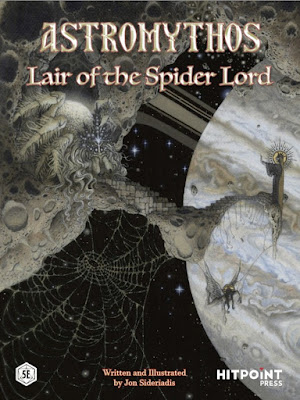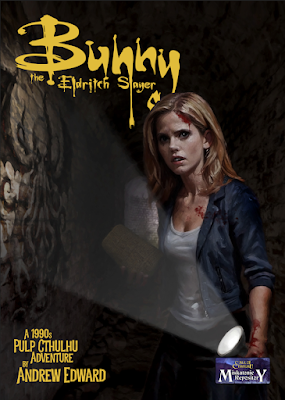The gaming magazine is dead. After all, when was the last time that you were able to purchase a gaming magazine at your nearest newsagent? Games Workshop’s White Dwarf is of course the exception, but it has been over a decade since Dragon appeared in print. However, in more recent times, the hobby has found other means to bring the magazine format to the market. Digitally, of course, but publishers have also created their own in-house titles and sold them direct or through distribution. Another vehicle has been Kickststarter.com, which has allowed amateurs to write, create, fund, and publish titles of their own, much like the fanzines of Kickstarter’s ZineQuest. The resulting titles are not fanzines though, being longer, tackling broader subject matters, and more professional in terms of their layout and design.
Senet is a print magazine about the craft, creativity, and community of board gaming. Bearing the tagline of “Board games are beautiful”, it is about the play and the experience of board games, it is about the creative thoughts and processes which go into each and every board game, and it is about board games as both artistry and art form. Published by Senet Magazine Limited, each issue promises previews of forthcoming, interesting titles, features which explore how and why we play, interviews with those involved in the process of creating a game, and reviews of the latest and most interesting releases. Senet is also one of the very few magazines about games to actually be available for sale on the high street. Senet Issue 14 was published in the spring of 2024 and is physically notable for its four-part, split cover inspired by the game Art Society and some classic pieces of artwork from around the world. The editorial highlights the fact that 2024 marked the fiftieth anniversary of Dungeons & Dragons and that as well as being the first and most successful roleplaying game, it has had its own influence upon boardgames, the editor noting that the first Eurogame inspired by Dungeons & Dragons—2012’s Lords of Waterdeep—was the editor’s first Eurogame. Which means that the editor has been playing Euro-style games for less time than you would think and playing roleplaying games for longer than you would think! Plus the article is a bit of nostalgia upon his part.
The issue proper begins with highlighting some of the forthcoming games with its regular preview, ‘Behold’. There is an unintended theme running through the previewed games, the board game Nature exploring evolution through a series of modules; players finding undiscovered animals on an unexplored mythical island and establishing nature reserves for them in Wondrous Creatures; and critters living in ice floe villages fighting monsters in FLOE, and that is animals and creatures of various kinds. The combat continues in Tibetana, but this is a game in which the aim is to grow by spreading cultures rather than being a game about war without confrontation. It is the most intriguing of titles previewed in the issue, though perhaps not as quite as intriguing as in previous issues of the magazine. ‘Points’, the regular column of readers’ letters, contains a mix of praise for the magazine and a discussion of gaming culture, including suggestions of how to interact with other gamers by focusing on them rather than oneself and a quick report on board game display at the Young Victoria & Albert museum in London. It shoehorns in more letters in than normal, rising from four to five, but as with the previous issues, there is scope here for expansion of this letters page to give space to more voices and readers of Senet, and so build a community. ‘For Love of the Game’, continuing the journey of the designer Tristian Hall towards the completion and publication of his Gloom of Kilforth—and beyond. Here he looks at what to do after the game has been fulfilled via Kickstarter and what the options are if a designer wants to keep the momentum going for his game. As Hall points out, the designer is in sales now. The question is, how more life is there in this journey and should space be made for other voices?
The tried and tested format of the magazine continues in Senet Issue 14: Two interviews, one with a designer, one with an artist, and one article exploring a game mechanic whilst another looks at a game theme. It is a format that works well since it throws a light on different aspects of the hobby and its creators. The mechanic in the issue is ‘Conflict of Interest’. Dan Thurot examines the prisoner’s dilemma, the classic scenario in game theory that shows why two rational individuals might not cooperate, even if it is in their best interest to do so. It begins with its historical origins and development by the RAND Corporation and sees how it has been extended into board game design. In doing so, it hits some classic board game designs from the last seventy years. Most notably, Diplomacy, but also Cosmic Encounter from EON and its subsequent reimplementation, Avalon Hill’s Dune. The article looks at the balance between self-interest and the needs of the group, often expressed as the semi-co-operative style of play, and what becomes clear is that the mechanic is used to explore some really interesting themes. In Cosmic Encounter, Dune, and Diplomacy, this was the balance of power, but in games like We’re Sinking! A Pirate’s Dilemma and HMS Dolores, it is about the division of loot, and in the very recent Molly House, from Wehrlegig Games, this is between the need to maintain a group lifestyle and being forced to inform.
Dan Jolin also conducts the issue’s first interview in ‘Larger Than Life’. This is with Brazilian board-game illustrator Weberson Santiago. His artwork was first seen in the international version of Coup, but his art, which he describes as possessing personality, has been seen since in The Bloody Inn, a game of murderous innkeepers from 2015; Avalon: Big Box, a re-implementation of The Resistance: Avalon, the Arthurian version of The Resistance, set in the same universe as Coup; and Kelp, the octopus versus shark game previewed in the previous issue of the magazine. The style is varied, but there is a theatricality and a little of the gothic to much of the artwork on show here. What is always enjoyable about these interviews is that they give an artist the chance to talk about his inspirations and how he interpreted a project.
To celebrate the fiftieth anniversary of the world’s first roleplaying game, Senet Issue 14 does not sidestep into the world of roleplaying, but explores how the world’s first roleplaying game has sidestepped into board games. In ‘The Advance of D&D’, Matt Thrower goes all the back to the first Dungeons & Dragons-inspired, but not an actual official Dungeons & Dragons board game, Dungeon!, before looking at more modern implementations. It points out how Dungeons & Dragons, Fourth Edition was more board game like with its grid-based play, annoying some of the roleplaying game’s players, but attracting board game players in its board game implementation, starting off with Castle Ravenloft. Many of the Dungeons & Dragons-inspired board games are battle rather than dungeon-based, so Lords of Waterdeep is one of the most radical designs to be based on the roleplaying game. This has interesting history, having been developed during lunch hours, but to date, the application of Dungeons & Dragons in board games has mainly been on battles rather than subtler conflicts as in Lords of Waterdeep. The article also suggests some other board games inspired by roleplaying games, but the inclusion of a trading card game like Vampire: The Eternal Struggle, feels like a stretch. Overall, an interesting read that explores Dungeons & Dragons-inspired board games which do more than simulate roleplaying or offer very light roleplaying.
The issue’s designer interview is with David Thompson. In ‘The Good Soldier’, Alexandra Sonechkina interviews the co-designer of Undaunted, the squad-level infantry wargame set in Normandy. The notable feature of his designs, nearly all of them with other designers, is how they focus on the individual. He talks about how the original design came about and then how the Science Fiction version of the Undaunted series, Undaunted 2200: Callisto, was developed. Another good interview which really piques the interest in the designer’s titles.
‘Unboxed’, Senet’s reviews section covers a wide range of games. The most notable are of Le Scorpion Masqué’s Sky Team, the two-player, limited communication board game of landing passenger aeroplanes and of the ecology and climate control-themed, 2024 Kennerspiel des Jahres Winner from CMYK and co-designer, Matt Leacock, Daybreak, and it is the latter that is ‘Senet’s Top Choice’. The inspiration for the issue’s cover, Art Society, is reviewed too, as The Fox Experiment, the new game from Elizabeth Hargreaves, the designer of the highly regarded Wingspan. The review strays into roleplaying a little with Acturus’ Endless Destinies: The Clockwork City, but with a card rather than dice mechanic, but its inclusion reflects another cross section of interesting games put under the lens.
As is traditional, Senet Issue 14 comes to a close with the regular end columns, ‘How to Play’ and ‘Shelf of Shame’. For ‘How to Play’, ‘Lord of the flies: how to win at Hive’ by Joe Schulz, in which he explains how he switched from judo following a shoulder injury to the two-player game Hive in 2015 and has since been world champion four times. Lastly, Pasan Fernando and Damian Armitage, the duo behind Meeples Abroad, pull out Merv: The Heart of Silk for their ‘Shelf of Shame’ and discover a strategic, city-building game and the wealth of options it offers.
Physically, Senet Issue 14 is shows off the board games it previews and reviews to great effect, just as you would expect. It contains a good mix of interesting and informative articles, ‘Conflict of Interest’ showing off a surprising mix of games that the prisoner’s dilemma has been applied to and ‘The Advance of D&D’ explores another side of the roleplaying game in its anniversary year. This is all backed up by some informative reviews. Senet Issue 14 is another good issue with a wide rage of content in a well presented package.










